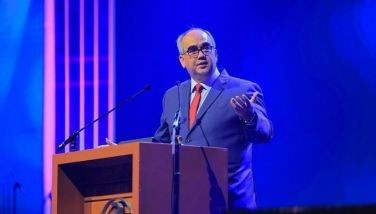Framework

Before commercially viable natural gas was found at the Malampaya field, there were numerous investors who joined the exploration. In the 1990s, there were over a hundred projects exploring Philippine waters and other possible deposits for natural gas. After we started drawing gas from Malampaya, investments for further exploration simply evaporated.
Today, natural gas deposits at Malampaya are nearly exhausted. But even as we have grown dependent on this source of energy, scarcely any exploratory activity is happening.
One leading theory for the dissipation of investor interest in exploring for new gas fields is the absence of a policy framework that will encourage domestic natural gas production. Without a clear policy framework, gas exploration and drilling will resemble what we saw at Mount Diwalwal during the gold rush there. Everyone simply walked over and started digging. Armed militias enforced informal boundaries. The gold that was dug up simply disappeared.
Sen. Pia Cayetano is a firm believer in the need for a clear policy framework that will attract investments in the development of our natural gas industry. Although it sometimes seems hers is a lonely voice, she has worked tirelessly to push the Philippine Natural Gas Industry Development Act (Senate Bill 2793), pushing it through the legislative mill.
Interest in pushing this piece of legislation forward may be low because prices for imported liquified natural gas (LNG) remain relatively cheap. But this price regime is vulnerable to sudden geopolitical shifts. When international prices for LNG spikes, we could find ourselves in an energy crisis. As a relatively small consumer of this commodity, we have only a feeble voice in shaping the international market.
When Russia invaded Ukraine, international prices for LNG gyrated wildly. They have since settled down. But we all have been provided a glimpse of what could happen to our energy situation if we continue with our limited indigenous gas supply.
In summarizing the bill’s intent, Cayetano said: “This is a unique opportunity to promote indigenous natural gas, which is cheaper, cleaner and serves as a transition fuel as the Philippines shifts towards renewable energy. We encourage the shift to natural gas but prioritize indigenous sources for enhanced energy security and price stability.”
A policy framework that gives preferential option for indigenous natural gas will create an environment where investors could reliably calculate their returns on investment. Without a policy framework that enables reliable calculation of returns, no investor will put in good money to explore for new deposits.
Exploration is capital extensive. Investors will want to manage their risks, given the Philippines’ notoriety for policy instability.
Building an energy secure future is a long-term effort. Such an effort will progress only if we have a clear policy framework.
Cayetano rhetorically asks: “Why are we heavily dependent on imported fuel when we have out own?”
That might seem a simple question. But it requires a complex answer.
Without a clear assurance that indigenous natural gas will be given preferential treatment, the risks will simply be too high for any investor. Domestic production could be left in a lurch during moments when international prices slip below domestic cost of production.
In the present situation, we have large business concerns that profit from importing LNG. They argue that international prices for LNG are lower than indigenous natural gas. But there is deceit in that argument. They do not include in their computation the costs of processing LNG back to gaseous state. This is a significant cost.
If we compute the cost of shipping and then processing LNG back to gas, the imported product very often costs more than indigenous natural gas. There are other sources of volatility, too, such as the movements in currency exchange rates. When the dollar rises and the peso weakens, imported LNG can turn out to be substantially more expensive. Right now, our currency is testing the P59:$1 level.
Right now, too, marker prices for LNG hover at about $16 per MMBtu. Malampaya gas is priced at $12 per MMBtu. Since production costs are computed over a long duration, domestic energy prices are more reliable. By contrast, LNG pricing is beyond our control. When traumatic global events happen, LNG pricing will be beyond the control of producers and suppliers of the commodity.
By contrast, indigenous natural gas pricing will be much more stable. This will give our energy supply greater reliability.
If we manage to mobilize the massive capital required to raise the volume of domestic natural gas production, we will not need to deflect dollars for imported fuel. That goes a long way towards providing our currency more stability. At the moment, for instance, the major Red Sea shipping route is threatened by Houthi attacks.
Needless to mention, government stands to make billions – possible trillions – from royalties on natural gas production. Royalties will provide our government with higher revenues than corporate taxes on importers.
It takes years to explore for natural gas and then build the wells that would draw the product from the bowels of the earth. By failing to provide a policy framework that will encourage exploration and drilling, we are making our own future hostage to imported LNG.
This is not benign neglect. This is almost an act of treason.
It is not patriotic that we carry on without a regulatory framework and incentive system to develop our own natural gas.
- Latest
- Trending























